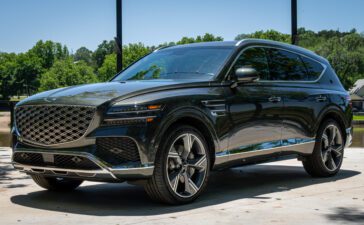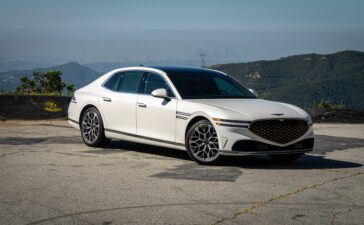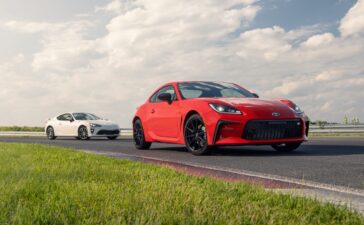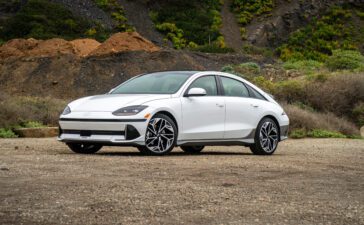Buying an EV might be the most talked-about subject in car ownership of the past several years. We have a whole features section dedicated to explaining the darn things. And it makes sense: Between automakers introducing new models seemingly every day, legislation pushing hard for a zero-emission future, and all corners of society weighing in across the greater internet, it’ll definitely be a high-up heading in history books that describe the early 2020s.
When it comes to how we transport ourselves around our vast planet, there’s a lot to be excited for in EV ownership, as well as growing EV ownership across the greater populace. Then, there may be some preconceived notions about EVs that should be addressed.
But there are still some actual downsides that we certainly can’t overlook. So let’s discuss it all: here are five myths about EVs, debunked, as well as five actual downsides. Depending on how these affect your own lifestyle could either sway you towards EV ownership or keep you away. What’s most important, however, is to have the knowledge to make the right choice. Let’s get into it.

Myth: EVs take too long to charge
Let’s start the list off with an easy one. Or, tricky one, depending on how you look at it. There are basically three charging levels that affect charging speed: Level 1 (120V), Level 2 (240V), and Level 3, also known as DC-fast charging. The higher the level, the faster the charge, and the exact charging speed varies quite a bit depending on each EV’s factory specifications—some charge at Level 2 faster than others, some make full use of a DC-fast charger’s rates while others don’t—so comparing and contrasting these on your list of potential EV purchases is important.
But let’s focus on DC-fast charging, as that’s what guarantees the quickest charging time. So far, technology’s achieved the ability to charge at as many as 350 kW, which, if fully taken advantage of, could add 200 miles of range to a modern EV in as little as 15 minutes.
Key part of that claim: If fully taken advantage of—DC-fast charging is limited by the vehicle’s own charging system. If its maximum charging rate is 100 kW, that’s the ceiling—energy is flowing at less than a third of the charging station’s capability, so it’ll take longer than a quarter of an hour. We’ll discuss more about this in a future, separate post, but 100 kW is generally considered low for modern EVs as most charge at 200 kW or more. As technology progresses, the floor will rise, and we may soon reach a point where 15 minutes is considered awfully long.
Then, if 15 to 30 minutes for charging seems like a long time, it doesn’t necessarily have to have a major impact on one’s lifestyle. With new charging stations cropping up all over, it could be a matter of regaining a couple days’ worth of range while paying a visit to the grocery store or running any other normal, everyday errand.
Myth: EVs don’t have enough range to cover my daily travel
According to the Department of Transportation, most American households travel under 100 miles per day. Most EVs can go at least 200 miles in between charging, with more and more exceeding 300 miles hitting dealership lots what seems like every month—it’s easier than ever to accommodate EV ownership into one’s daily life.
If your household doesn’t have charging at home, such as in an apartment or house without the appropriate electrical service, making some changes to your daily schedule may not be that bad. Sure, anyone who doesn’t have at-home charging will be faced with an “Oh shoot, I’ve only got 20 miles of range left and need way more than that for tomorrow” type of scenario, but a little preparation could go a long way.

Myth: EVs aren’t fun to drive
As an avowed performance driving and motorsports enthusiast, it’s indeed quite hard to beat an internal combustion engine with an entertaining torque curve and awesome soundtrack.
But here’s the thing: Almost all EVs have their weight down low in the chassis and in between the front and rear axles, which bodes quite well for overall handling dynamics. Electric motors produce instant torque, too, so they’re inherently quite fast off the line and fun to wring out in many different scenarios. These make ripping around in EVs quite fun indeed.
Then, manufacturers are coming up with clever ways to simulate conventional drivetrains and the driving characteristics that they can achieve, such as the 2024 Audi SQ8 e-tron being driftable. Or, utilizing regen to simulate downshifts. Then, Hyundai utilizing a fake soundtrack in its Ioniq 5 N may sound cheesy, but you can’t fault the brand’s willingness to try—I bet it’s more fun than you think.
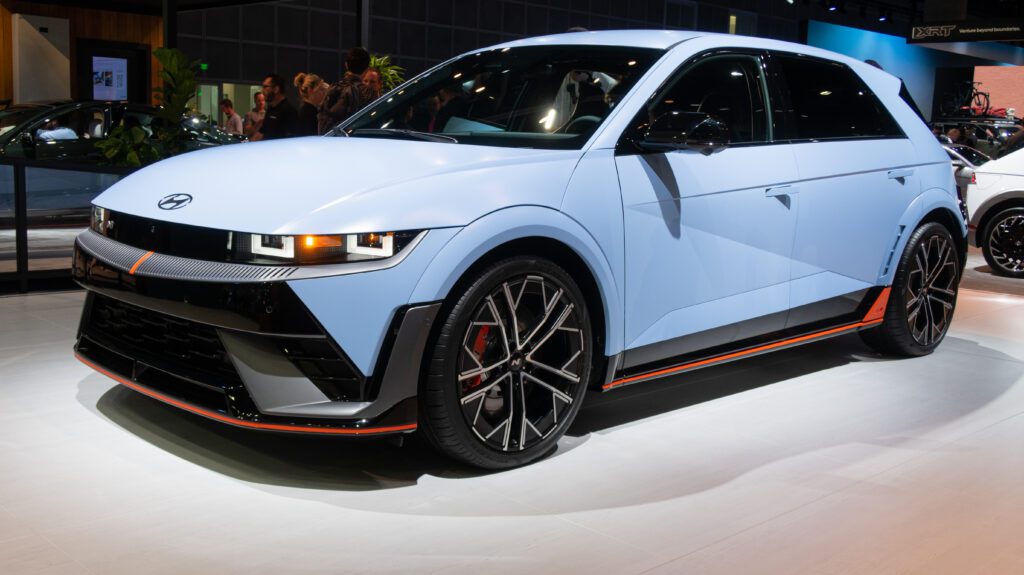
Myth: EV manufacturing negates the positive environmental impacts of driving an EV
This one is a little complicated, and everyone loves to quote Jeremy Clarkson’s bit about the Toyota Prius from, like, 15 years ago. And yes, modern mining and shipping practices made battery production bad. Like, really bad. From excess emissions and fumes to the copious use of water in places that, uh, didn’t quite have a lot to begin with. But technology’s made good headway since then. Only way to go is up, right?
While the manufacturing of EV components—particularly the battery—does have its own greenhouse gas emissions (GHG) to factor in, the EPA details that between the lifecycle of an ICE car and an EV with at least 300 miles of battery range, the former has far higher GHG emissions.
We’ll save the geopolitical aspects of mining rare earth metals for electric motor production for another post. Generally, meaningful progress has been made in reducing these, such as manufacturers pivoting away from certain rare metals, as well as sourcing the other main ingredient, lithium, from domestic sources. Heck, one of our planet’s possibly largest lithium reserves is just a bit east of San Diego.
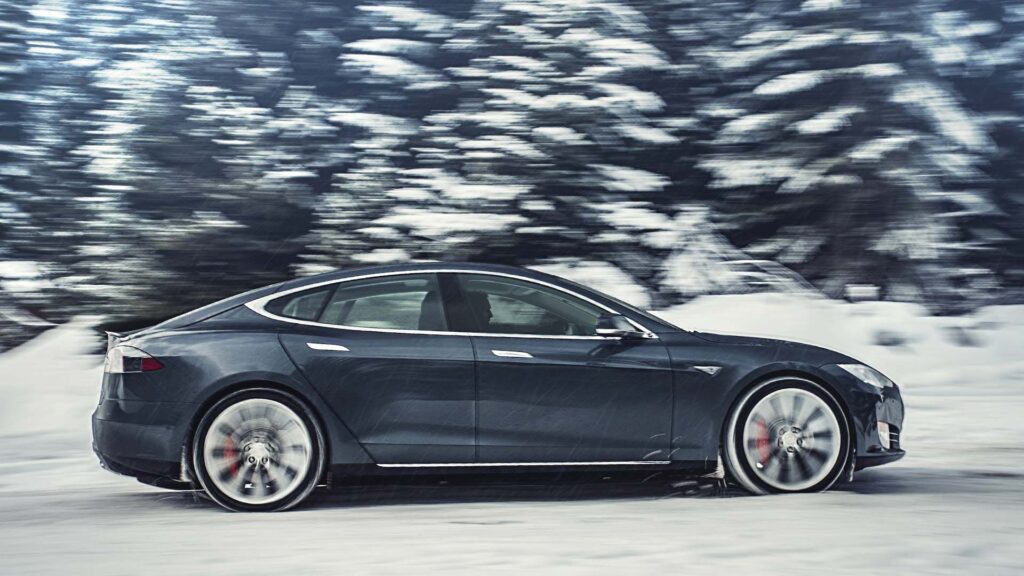
Myth: Charging EVs will put too much stress on America’s power grid
This is definitely a valid concern. But it’s important to keep in mind—once again, according to the EPA—that charging can happen at off-peak hours at home. Meaning, you’ve just gotten home for the night and plugged in your Fiat 500e to your home’s 240V service to charge overnight.
Not only that, but the EPA even sources Scientific American to say that California’s more than one million EVs account for less than one percent of the grid’s load during peak energy hours. Our nation’s energy grid is constantly being upgraded, too, so hopefully, energy blackouts will become a thing of the past if the government is smart about it (so far, it seems like it’s generally on the right track).
In short, while the details of this point can be a bit complicated, the answer is yes, EVs will be just fine on the American power grid, and industry employees are optimistic about their capabilities to ensure that.
Downside: EVs aren’t the funnest to drive
This is certainly subjective, but I know I’m not alone: EVs are fun to hoon around, but they still don’t hold a candle to an ICE vehicle. Especially if its engine is sporting some enthusiastic tuning, forced induction or not.
I won’t wax poetic too hard, but there truly is something special about the theatrical soundtrack of internal combustion in fun scenarios, such as a fun, curvy road or ripping laps on the track. Or, launching it off the line when the conditions are right. I mean, it’s one of the main reasons why I got into this industry, as well as why my list of next cars is chock-full of vivacious, big-smile-inducing sports cars.
It’s really cool that automakers are starting to synthesize some of this and integrate it into EVs, but they sure have a long way to go.

Downside: Charging infrastructure can really suck
If charging infrastructure just isn’t all that great where you live, and you aren’t able to charge at home, it may indeed be a good idea to pass on EV ownership until it improves. It’s more important to safely and reliably transport you and/or your family, get to and from work, go about your daily life, etc. than stretch your schedule and work a little too hard to make EV ownership work. It’s all about balance, and sacrificing what you deem to be too much will only make life more inconvenient in the end.
It’s tough for many folks just dealing with a lengthy commute to and from work every day. Why tack on an additional 15 minutes to an hour—assuming there’s an open, functioning charger waiting for you—when all you want to do is not be in a car anymore?
Charging infrastructure can suck in other ways, too, like broken/out-of-order chargers, inconsiderate jerks hogging charging spots when they aren’t charging, dealing with, like, twenty different charging companies’ apps, and more.
Downside: EVs are heavy
This is a byproduct of our current lithium battery technology, and it doesn’t bode well for handling, tire wear, brake wear, and our poor crumbling infrastructure. As well as our parking garages. It doesn’t help that SUVs and trucks are very much en vogue, either.
Hopefully, as battery technology progresses, this quickly becomes a thing of the past. Go, solid-state, go!
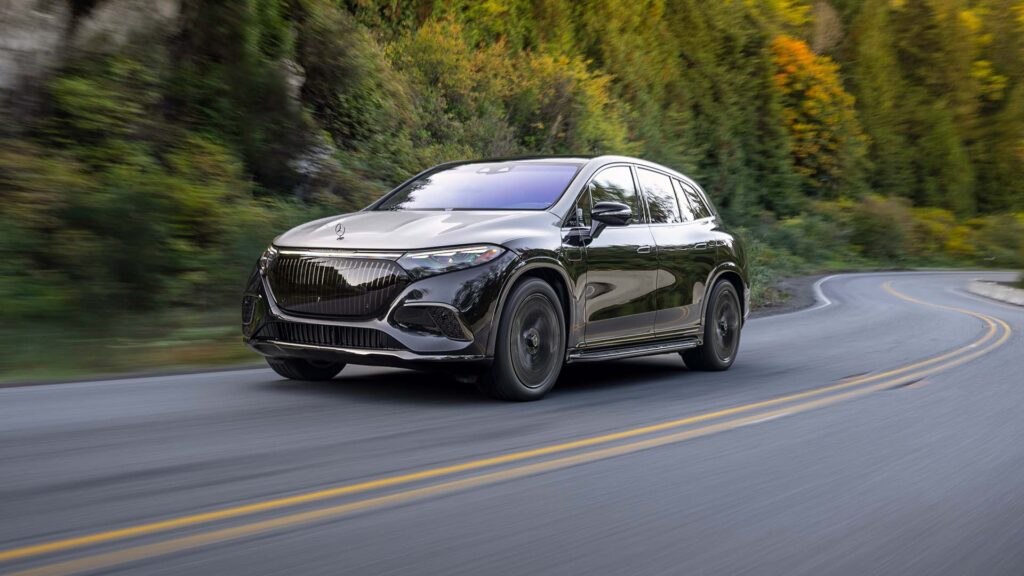
Downside: EVs are still expensive
According to Kelley Blue Book by way of Cox Automotive, the average new car price is right around $48,000, which is awfully expensive. Combine that with US News and World Reports’ reporting that EVs are on average $12,000 higher in price than their ICE counterparts, and things aren’t looking great for greater EV affordability.
But thanks to various federal, state, and local tax incentives for both new and used models, the price starts to tumble a tad.
In addition to some upfront relief, technology is always evolving, and technology-heavy EVs are no exception; As new tech becomes more and more common, prices will go down. Especially when it comes to the cost of manufacturing batteries. Then, we have to keep in mind that EVs’ running costs are overall cheaper, which helps ease financial pain after any initial sticker shock.
Downside: What about OBD II?
OBD II (not ODB II, which you could say is actually YDB) stands for Onboard Diagnostics II, the standardized system used by all automakers to help troubleshoot a vehicle’s issues. Meaning, the check engine light comes on, you use an OBD II scanner to see why, and the ECU tells you a diagnostic trouble code (DTC)—or a massive list of ‘em—to help you pinpoint what’s wrong.
Currently, not all EVs possess a system like OBD II; after all, according to this story over at Ars Technica, a lot of the reason why it was originally developed was to monitor and reduce tailpipe emissions, which EVs don’t have. Still, onboard diagnostics cover a lot more than that, and a new system dubbed Advanced Clean Cars II by the California Air Resources Board (CARB) will require a new standardized system for EVs, PHEVs, and hydrogen-fueled cars by 2026, which could end up being adopted at the federal level.
Pun very much intended, there are positives and negatives to battery-powered car ownership. While some may require a little (or a lot) of adaptation, one thing’s for certain: As EV technology moves forth, the myths will be more extinguished from our greater society’s psyche, and some (or all) of the downsides will no longer be downsides.








